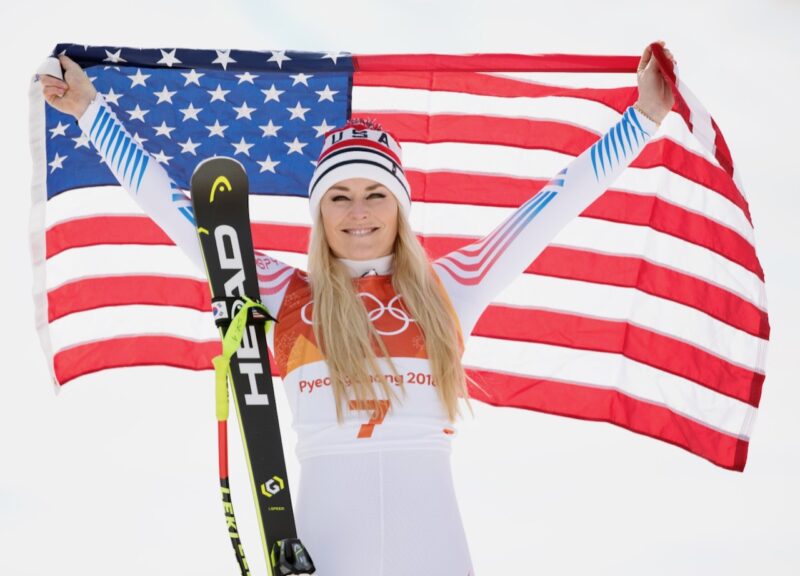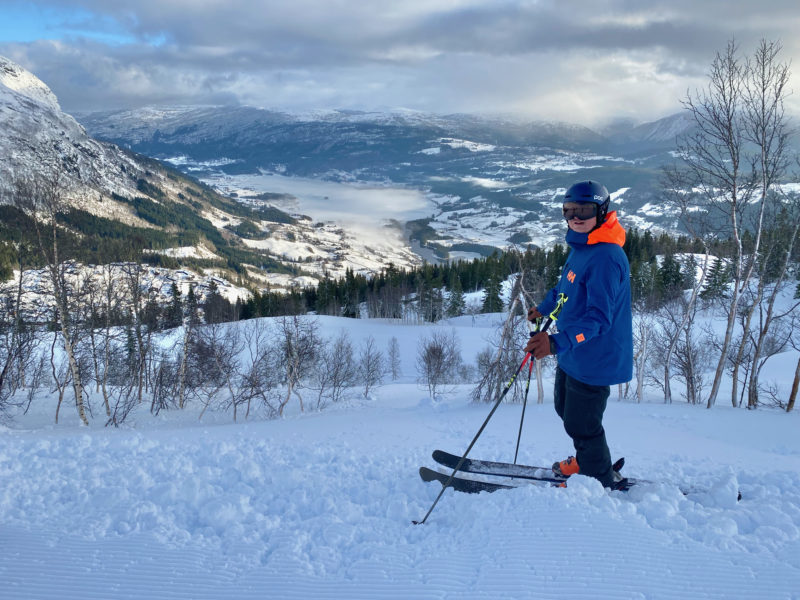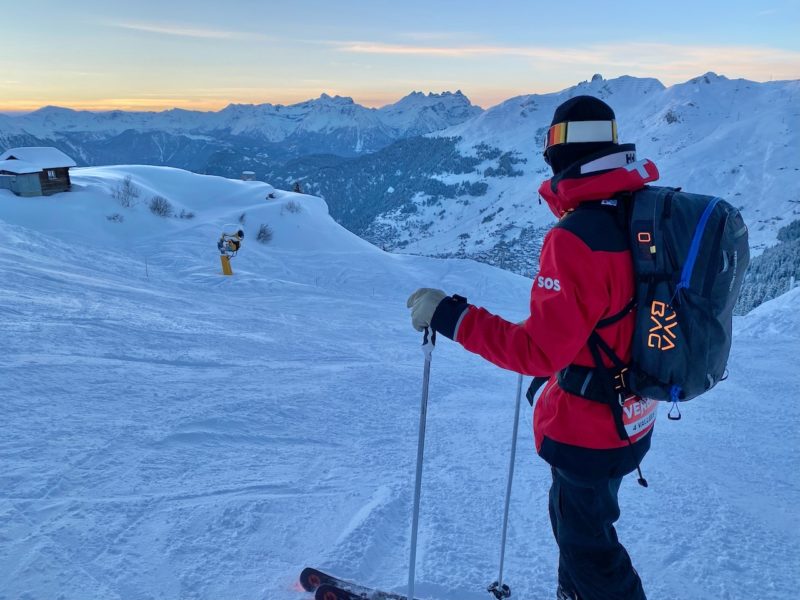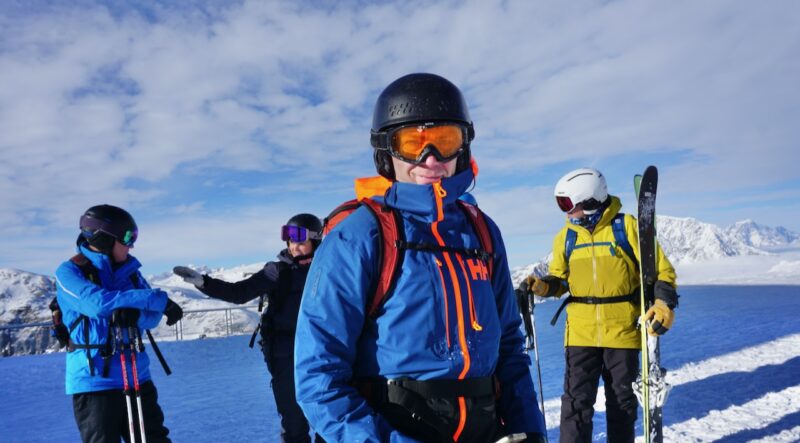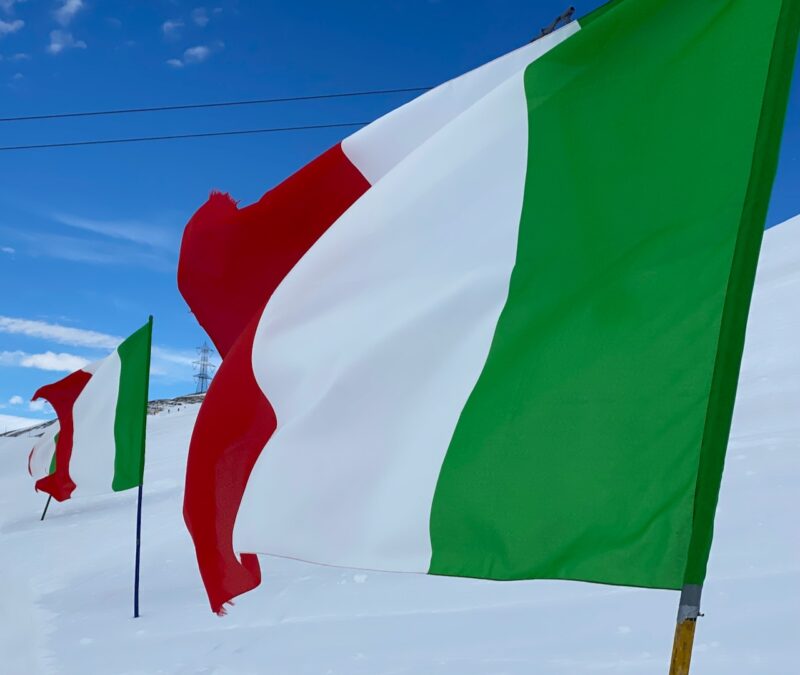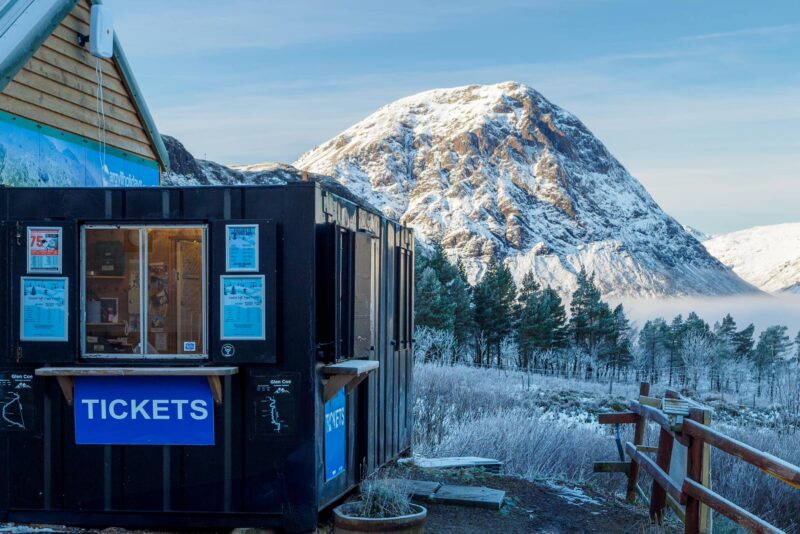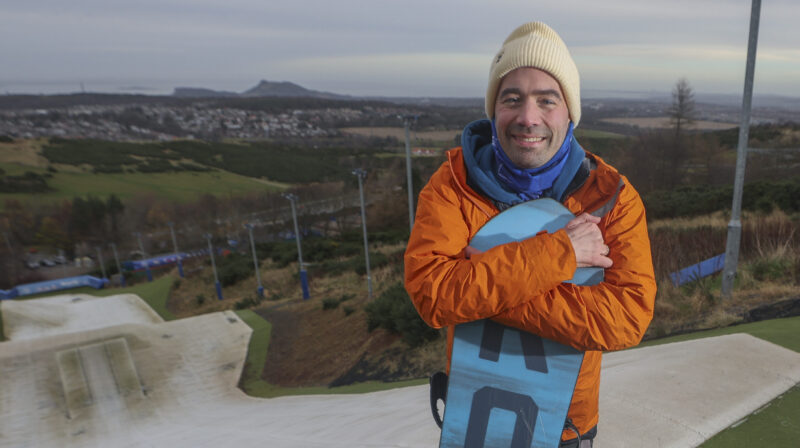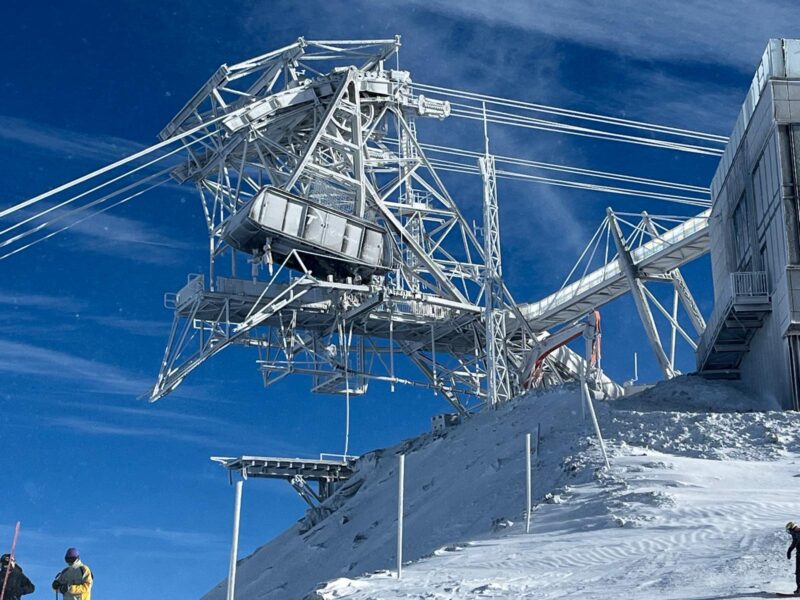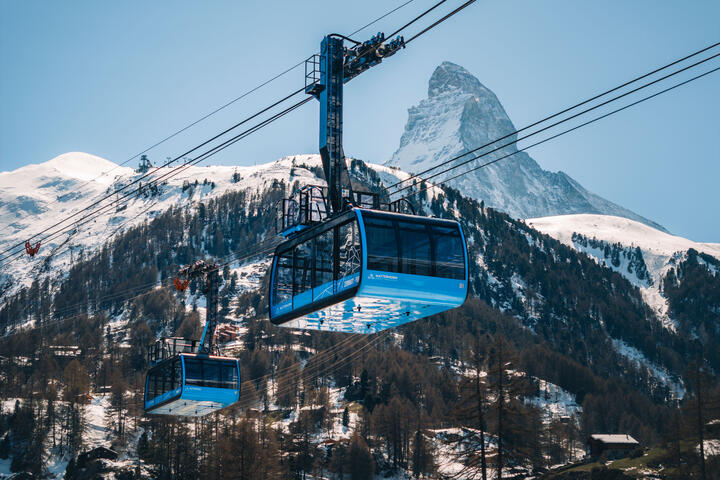Ski Club of Great Britain Celebrates 120 Years
1st July 2023
Last modified on July 5th, 2023
It all started in the Cafe Royal in London in 1903. The Club has held a Gala Dinner in the same venue to commemorate the occasion. We look back at the Club’s history.
On May 6th 1903 a dozen or so young men (even to this day no-one is sure exactly how many participants there were round the table) sat down in the cellars to draw up plans for a ski club.
They wanted to develop the embryonic sport’s downhill potential and promote skiing.
The basic idea of the Club was to ‘assist members in such matters as where to go, what sort of ski to purchase’ (the plural of ski back then was ski, not skis) ‘from whom initial instruction could be had, and what the general condition of the snow was’….
And now the Club is back at the Café Royal.
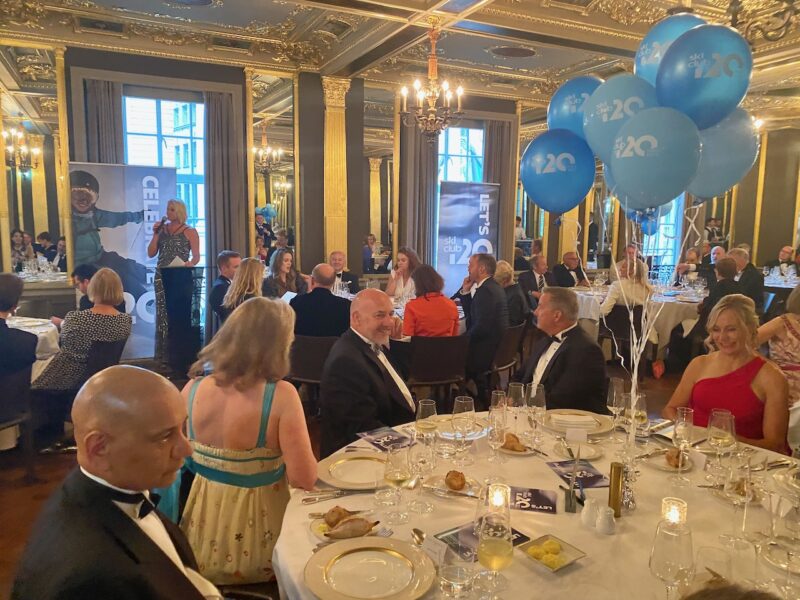
Cafe Royal, Ski Club GB commemoration dinner. Image © PlanetSKI
“I wish to offer a big thanks to the founders of the Club,” said the current chairman, Angus Maciver.
“The fundamentals of the Club are the same……the Club is for those that are passionate about skiing….I believe we are now at the start of a periodic upswing.
“Our 120th year is shaping up to be a memorable year and we are now at a good place and will be better in the future,” he added.

Cafe Royal, Ski Club GB commemoration dinner. Image © PlanetSKI
The occasion also saw the handing out of the Club’s prestigious, Pery Medal.
It is awarded at the discretion of the Club’s governing council “to honour individuals and organisations that have made significant contributions in various fields, all relating to skiing and snowsports”.
This year it went to GB’s greatest ever skier, the slalom skier Dave Ryding.
It was presented to him by the Club’s ambassador and former GB ski racer, Chemmy Alcott.

Cafe Royal, Ski Club GB commemoration dinner. Image © PlanetSKI
Here, with the help of the Ski Club of Great Britain, we look back at the history of the UK’s oldest ski club.

The Ski Club of Great Britain
The Early Years – 1903 to the 1930s
In 1905, at the Club’s Annual General Meeting, it was decided that the annual subscription…would be 5s (25p) for gentlemen, and 2s 6d (12½ p) for ladies, payable in advance.
In 1905 the Ski Club began publishing the British Ski Year Book, the club’s magazine.
The early year books are a fascinating record of the changes in equipment, clothes, the development of ski lifts, the technique of skiing, along with the costs and holidays over the years.
Indeed, in many ways the early history of the Ski Club is almost the history of Alpine skiing itself.
It is littered with acts of great darring-do, often eccentric, sometimes hilarious, all recorded in the quaint and colourful language of the “golden age” in the Year Book.
There are references in early volumes to reaching resorts by horse drawn sleighs, pictures of ladies skiing in skirts and reports of races where competitors started en masse at the same time racing down unprepared slopes.
Before World War I the Ski Club’s focus was cross-country skiing, with the first official British ski championships in Saanenmoser, Switzerland consisting of cross-country combined with a jumping competition.
Although the Ski Club’s committee ‘shall have the power to invite ladies to become members of the club’, they were not allowed to be elected to the Committee.
Accommodation in the mountains was inevitably limited, and it was agreed that ‘undressing should be reduced to a minimum’.
‘There was a tacit understanding that only the most perfunctory attempt at toilet would be considered desirable…The most suitable dress for a lady…is a flannel shirt, knickerbockers, and a very short skirt. Gaiters are excellent …to keep out the snow, but can be discarded by the expert.’
1920s
The years saw important steps forward in the course of ski history.
Other ski clubs, such as the Ladies Ski Club and Kandahar Ski Club, were formed with a focus on racing.
Alpine skiing had begun to evolve.
The first British National Ski Championships to include downhill (Alpine) skiing took place in Wengen in 1921 and were organized by Arnold Lunn on behalf of the Ski Club of Great Britain.
The Ski Club continued to influence changes in the Alps in 1921, as they encouraged the Swiss to open the railways in Zermatt, Wengen and Mürren during the winter – the first ski lifts.
The next year Lunn set up the first modern slalom in Mürren.
Competitors were judged on speed through pairs of gates.
He got the idea from the Norwegians as they tested people skiing fast down amongst trees.
The test was seen as a true test of skiing in natural conditions because racers were not allowed to study the course before the race.
Another famous skier of this time was Gerald Seligman (Ski Club President 1927-1929), who did much of the early research on the structure of snow crystals.
His study was used as the basis of avalanche research because it differentiated between the crystals which knitted together as they fell, and those which turned into tiny glassy globules and formed unstable layers capable of producing dangerous slides.
During the mid-1920s the Ski Club began to develop services for members.
They provided snow and weather reports to national newspapers for the first time, and the first Ski Club representatives were sent out to the Alps in 1928.
The Ski Club was also making a concerted effort at this time to have downhill and slalom racing officially recognised.
They circulated an appeal to all the national associations but not one of them replied.
In 1928 there was a breakthrough as the International Ski Federation (FIS) provisionally approved the British rules for downhill and slalom at a congress meeting in Oslo.
The rules were officially approved in 1930.
The 1920s ended with the introduction of the Pery Medal, awarded for the most notable contributions to skiing.
1930s
The 1930s started with the first World Championships in downhill and slalom at Mürren.
These were organized by the Ski Club of Great Britain.
There was criticism from some members that the club was too race-orientated.
However, those keen on racing accused it of being biased towards mountaineering, so maybe the balance was about right after all.
Another milestone was achieved in 1936 when Arnold Lunn persuaded the International Olympic Committee to include downhill and slalom in the Winter Olympic Games held in Garmisch-Partenkirchen.
At this time Lunn remarked that it was as strange for a Briton to have so much influence on the sport of skiing, as it would be for an Eskimo to revolutionise the sport of cricket.
It is no surprise, therefore, that he encountered some opposition from Alpine and Scandinavian countries.
The Ski Club and its leaders started to organise touring parties during the 1930s too.
These were to teach people to ski and keep them entertained in the evenings.
This still exists today, as the Ski Club Freshtracks holiday programme.
During World War II the British Ski Year Book continued to be published.
It found its way to Field Marshal Montgomery in the desert and to prisoners of war in the dreaded Changi jail.
The Post War Years – to 2000s
After WW II the Ski Club moved offices from Hobart Place to 118 Eaton Square.
Ski Club member Donald Gomme, who had worked in an aircraft factory during the war and learned how to bond wood with aluminium, manufactured the Gomme ski.
It was the first ski to include a layer of metal.
In the winter of 1963 the first Ski Club Reps Course was held over 10 days in Sauze d’Oulx, Italy.
Ski Club Reps were taught about mountain safety, how to look after members in resorts and how to co-operate with resort staff.
The National Ski Federation of Great Britain (later renamed the British Ski Federation, and now British Ski and Snowboard) was set up in 1964 as the governing body of skiing in Great Britain.
The Ski Club had decided that too much of the subscription money collected from members was being used to keep the national alpine and cross-country racing teams operating.
Accommodation and travel costs abroad were rising fast and as a membership organisation the Club could not apply to the Sports Council or Government for grants.
The Ski Club continued to share premises with the Ski Federation until the 1980s.
1970s
During the early 1970s the Ski Club introduced ski holidays for families.
The British Ski Year Book was also revamped at this time, from a small blue book to a colourful A4 magazine called Ski survey.
In the mid-1970s the family trips were renamed ‘Skiing Parties with a Purpose’ which were based on the idea of skiing with a Rep, and some of the holidays included an instruction element.
The holiday programme was extended in the late 1970s to include adult and over 50s holidays which still exist today as Peak Experience.
1980s
Throughout the 1980s the Ski Club concentrated its efforts into smoothing the path of holiday skiers, who amounted to about a million people each year in Great Britain.
These efforts lead to the creation of the Information Department to advise both members and non-members on resorts, travel and equipment.
1990s
In the winter season of 1995-96 the Ski Club launched www.skiclub.co.uk.
This was the first ever wintersports website, which continues to be one of the leading wintersports websites in the world.
The following year saw the holidays programme expand once more, with the incorporation of the off-piste ski company ‘Freshtracks’.
This increased the off-piste programme enormously and included many holidays with mountain guides.
1997 saw the Ski Club move from its leasehold premises in Eaton Square to a new freehold building in Wimbledon Village, just down the road from the All England Lawn Tennis Association.
The Wimbledon offices included bar facilities and the Arnold Lunn Library where ski memorabilia, artwork, pictures of early races and an extensive collection of skiing publications reside.
In 1997 Ski survey was renamed Ski and board and then in 1999 the magazine was redesigned to make it more inspirational and appeal to a wider audience.
It later became simply Ski+Board.
The former CEO, Caroline Stuart-Taylor, was always keen to set the record straight about the Club’s long-ago elitist imagine.
“We’re not exclusive “ she said, “and we’re not hooray-Henries. We’re not old-fashioned fuddy-duddies, or cliquey, or stuffy or elitist. We’re just normal people who like skiing. Absolutely anyone can join.”
2000s
The website was relaunched in 2000 which transformed it from a ‘brochure’ website to a fully interactive site.
2003 was a milestone as the Ski Club had been in existence for 100 years encouraging millions of Britons to ski, while looking forward to encouraging millions more over the next centenary.
The winter of 2004-05 saw an overhaul of the website allowing it to hit the one million unique visitors a year mark.
At this time Ski Club Holidays was rebranded as Ski Freshtracks.
2006 then witnessed the launch of Ski Club TV, the first dedicated snowsports internet TV channel.
Today, the Ski Club’s video content is hosted on its YouTube channel.

The Ski Club of Great Britain
The Present and the Future
Following the recent challenges of the global pandemic, the Ski Club is now back to full operating strength with a dedicated team of 22 based in office space near the Oval in Vauxhall.
The club is now investing for the future.
Its website continues to attract over a million visitors each winter and will be relaunched this autumn with a fresh new design and expanded content.
The Ski Club’s reps were based in 24 ski resorts in Europe and North America during the 2022-23 winter season, that’s a 50% expansion over 2021/22.
There are plans to expand the programme again for next winter to closer to 30 resorts including representation in France for the first time since 2015.
The new resorts will be announced soon.
The Ski Club’s Freshtracks holidays offer the UK’s most comprehensive programme for skiing enthusiasts looking to take to the slopes with like-minded and similar-ability skiers.
The programme includes a range of off-piste, ski touring, weekend, all-mountain and bucket-list style trips, to both short and long-haul destinations.
In 2023 Freshtracks carried over 20% more members year-on-year.
The programme is expanding again for this year and will launch shortly at the end of July 2023.
The Ski Club’s founding purpose is to bring members together to enjoy time on snow, whether skiing with reps, travelling with other members on a Freshtracks holiday, or meeting up with other members in resort for social skiing.
Summer doesn’t stop members meeting to ski, as the Club organises a number of events in UK Snowdomes over the summer.
Members have the opportunity to ski with 4-time Olympian and Club ambassador Chemmy Alcott, Ski+Board’s technique editor Warren Smith, and a number of other camps and clinics with top British instructors.
The Ski Club has also launched a 2023 summer-skiing programme in the huge indoor SnowWorld complex in Landgraaf, Holland in partnership with Impulse Racing.
Also new for 2023 is a smart membership card that acts as a multi-resort liftpass.
Created in partnership with Alto Ski the Skidata based membership card allows members to pre purchase lift passes covering over 70% of European resorts.
Coupled with a partner app where members can manage their membership, the cards have a lifespan of 3 years+ compared to the current 1 year span, reducing waste.
Members looking to ski further afield and/or multiple times a season can also now purchase the Ikon pass at a very special members only rate.
The Ikon pass provides access to more than 50 resorts across North America, Europe and Asia.
Unlimited skiing is available at 15 North American destinations for the 2023/24 winter, including the iconic destinations of Steamboat, Mammoth Mountain and Tremblant.
It offfers resorts in Europe too including Soldeu-Grandvalira(Andorra), Kitzbühel (Austria), Zermatt (Switzerland), Cortina d’Ampezzo (Italy), and Chamonix Mont Blanc (France).
Members can benefit from a number of offers through partnerships with leading brands, travel providers, ski schools, tour operators and retailers.
These include Bolle, Snow+Rock, DFDS Ferries, Ski-Lifts, New Generation, Ski Solutions, Sunweb, Skiworld, Iglu and SkiSet.
Individual membership of the club costs from £75 a year, family membership (2 adults and unlimited children under 24) costs from £120. Platinum membership including annual multi-trip travel insurance costs from £235 (individual multi trip cover Europe aged 35-69)
The Royal Patron of the Ski Club of Great Britain is HRH The Duke of Kent KG, and Olympic skier Chemmy Alcott is the Club’s Ambassador
Ski Club current membership now exceeds 17,000.

PlanetSKI logo


